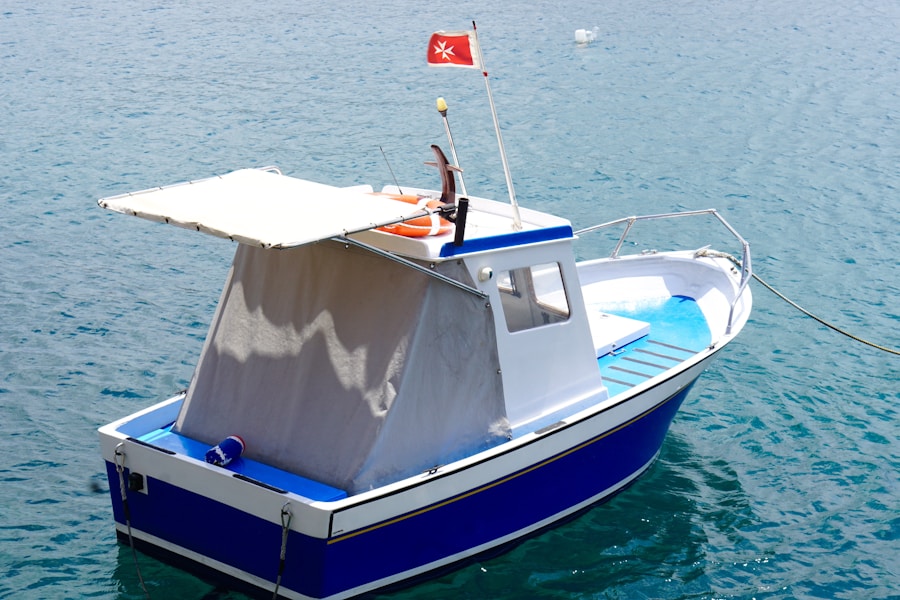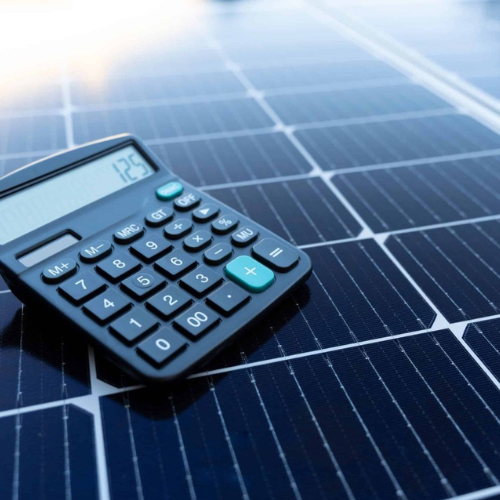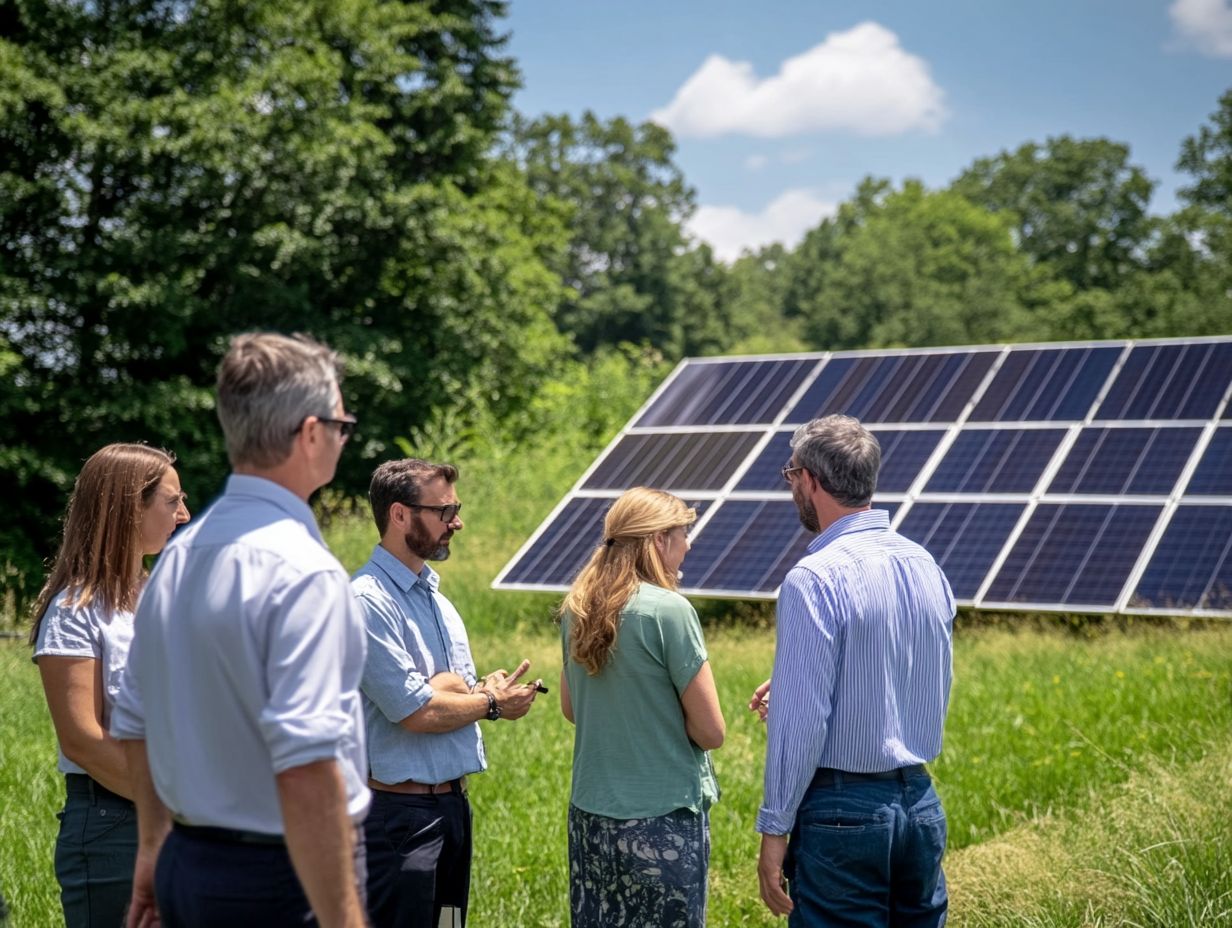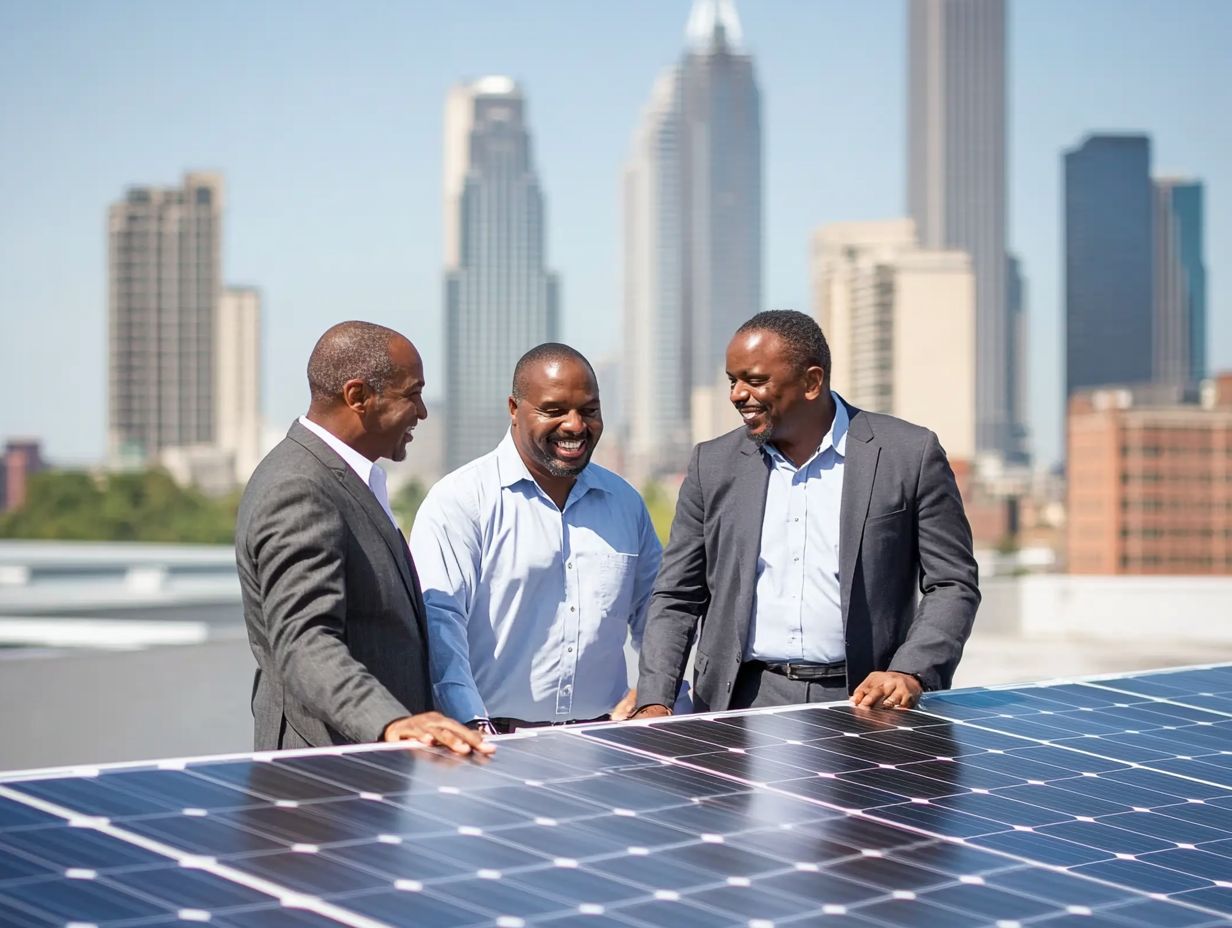Contents
- 1 How Flexible Solar Panels Work
- 2 Installing Flexible Solar Panels on Your Boat
- 3 Choosing the Right Size and Type of Flexible Solar Panels
- 4 Maintaining and Caring for Flexible Solar Panels
- 5 Maximizing Energy Efficiency with Flexible Solar Panels
- 6 Integrating Flexible Solar Panels with Your Boat’s Electrical System
- 7 The Future of Flexible Solar Panel Technology for Boats
- 8 FAQs
- 8.1 What are flexible solar panels for boats?
- 8.2 How do flexible solar panels for boats work?
- 8.3 What are the benefits of using flexible solar panels for boats?
- 8.4 How are flexible solar panels for boats installed?
- 8.5 Are flexible solar panels for boats durable?
- 8.6 What are the considerations when choosing flexible solar panels for boats?
When it comes to harnessing solar energy on your boat, flexible solar panels offer a multitude of advantages that can significantly enhance your maritime experience. One of the most compelling benefits is their lightweight and portable design. Unlike traditional rigid solar panels, flexible panels can easily conform to the contours of your boat’s surface, allowing for installation in areas that may be otherwise unusable.
This adaptability not only maximizes the available space but also reduces the overall weight of your solar setup, which is crucial for maintaining optimal performance on the water. Another significant advantage is the durability and resilience of flexible solar panels. Constructed from robust materials, these panels are designed to withstand harsh marine environments, including saltwater exposure and extreme weather conditions.
This durability means you can enjoy peace of mind knowing that your investment is protected against the elements. Additionally, flexible solar panels are less prone to breakage compared to their rigid counterparts, making them an ideal choice for the unpredictable nature of boating. Get your free solar assessment at https://www.solarenergy4u.org/free-pro-advice/.
Key Takeaways
- Flexible solar panels are lightweight and can be easily installed on boats, providing a reliable source of renewable energy.
- These panels work by converting sunlight into electricity through photovoltaic cells, which are made from layers of semiconductor materials.
- When installing flexible solar panels on your boat, it’s important to consider factors such as the panel’s size, type, and placement to maximize energy efficiency.
- Regular maintenance, such as cleaning and inspecting for damage, is essential for ensuring the longevity and performance of flexible solar panels.
- The future of flexible solar panel technology for boats looks promising, with advancements in efficiency and durability expected to make them an even more popular choice for marine renewable energy.
How Flexible Solar Panels Work
Construction and Efficiency
The unique aspect of flexible solar panels lies in their construction; they are made from thin-film technology, which allows them to be lightweight and bendable while still maintaining high energy conversion rates. The efficiency of flexible solar panels can vary based on several factors, including the type of materials used and the angle at which they receive sunlight.
Performance in Less-Than-Ideal Conditions
While they may not always match the efficiency levels of traditional rigid panels, advancements in technology have led to significant improvements in their performance. This means that even in less-than-ideal conditions, such as cloudy weather or low angles of sunlight, flexible solar panels can still generate a respectable amount of energy for your boat.
Advantages of Flexible Solar Panels
Overall, flexible solar panels offer a reliable and efficient way to generate energy, making them an excellent option for boats and other applications where space and weight are a concern.
Installing Flexible Solar Panels on Your Boat

Installing flexible solar panels on your boat is a straightforward process that can be accomplished with minimal tools and expertise. The first step involves selecting the appropriate location for installation. Ideally, you want to choose a flat surface that receives maximum sunlight exposure throughout the day.
Common locations include the deck, cabin roof, or even on top of biminis and other structures where space allows. Once you’ve identified the best spot, you’ll need to prepare the surface by cleaning it thoroughly to ensure proper adhesion. Most flexible solar panels come with an adhesive backing, making installation as simple as peeling off the protective layer and pressing the panel into place.
However, for added security, you may want to use additional mounting hardware or sealants to ensure that the panels remain firmly attached, especially in rough waters. After installation, connecting the panels to your boat’s electrical system is typically done through a charge controller, which regulates the flow of electricity to your batteries.
Choosing the Right Size and Type of Flexible Solar Panels
| Factors | Considerations |
|---|---|
| Solar Panel Size | Available space for installation, power output requirements, weight limitations |
| Solar Panel Type | Monocrystalline, polycrystalline, thin-film; efficiency, durability, cost |
| Flexibility | Bend radius, flexibility for curved surfaces, ease of installation |
| Weather Resistance | Waterproofing, UV resistance, temperature tolerance |
| Mounting Options | Adhesive backing, grommets, eyelets, compatibility with mounting hardware |
Selecting the right size and type of flexible solar panels for your boat is crucial for optimizing energy production. The first consideration should be your energy needs; assess how much power you require for your onboard systems, such as lights, navigation equipment, and appliances. This will help you determine how many panels you need and their total wattage capacity.
When it comes to types of flexible solar panels, you’ll find various options available on the market. Monocrystalline panels are known for their high efficiency and performance in low-light conditions, making them a popular choice among boaters. On the other hand, polycrystalline panels tend to be more affordable but may have slightly lower efficiency rates.
Additionally, consider factors such as weight, flexibility, and warranty when making your decision. By carefully evaluating these aspects, you can ensure that you choose a solar panel system that meets your specific needs while enhancing your boating experience.
Maintaining and Caring for Flexible Solar Panels
Proper maintenance and care are essential for ensuring the longevity and efficiency of your flexible solar panels. One of the simplest yet most effective ways to maintain them is through regular cleaning. Dust, salt residue, and debris can accumulate on the surface of the panels over time, reducing their ability to absorb sunlight effectively.
A gentle wash with mild soap and water followed by a thorough rinse will help keep them clean and functioning optimally. In addition to cleaning, it’s important to inspect your flexible solar panels periodically for any signs of damage or wear. Look for cracks, peeling edges, or any other irregularities that could affect performance.
If you notice any issues, addressing them promptly can prevent further damage and ensure that your solar system continues to operate efficiently. Furthermore, storing your boat properly during off-seasons or extreme weather conditions can also help protect your solar panels from unnecessary wear and tear.
Maximizing Energy Efficiency with Flexible Solar Panels

Optimizing Panel Angle
One effective method is optimizing the angle at which your panels are positioned relative to the sun. While flexible panels can be installed flat on surfaces, angling them slightly can enhance their exposure to sunlight throughout the day. If possible, consider using adjustable mounts that allow you to change the angle based on the sun’s position.
Reducing Energy Consumption
Another way to boost energy efficiency is by integrating energy-efficient appliances and LED lighting into your boat’s electrical system. By reducing overall energy consumption, you can make better use of the power generated by your solar panels.
Monitoring Energy Usage
Additionally, monitoring your energy usage with a battery management system can help you identify patterns and make adjustments as needed to ensure that you’re getting the most out of your solar setup.
Integrating Flexible Solar Panels with Your Boat’s Electrical System
Integrating flexible solar panels with your boat’s electrical system is a crucial step in harnessing solar energy effectively. The first component you’ll need is a charge controller, which regulates the voltage and current coming from the solar panels to prevent overcharging your batteries. This device ensures that your batteries receive a steady flow of power without risking damage from excess voltage.
Once you’ve installed the charge controller, you’ll connect it to your battery bank using appropriate wiring and connectors. It’s essential to follow safety guidelines during this process to avoid short circuits or electrical hazards. After everything is connected correctly, you should monitor the system regularly to ensure it’s functioning as intended.
Many modern charge controllers come equipped with monitoring features that allow you to track energy production and battery status easily.
The Future of Flexible Solar Panel Technology for Boats
As technology continues to advance, the future of flexible solar panel technology for boats looks promising. Researchers are constantly exploring new materials and methods to enhance efficiency and durability further. Innovations such as organic photovoltaics and perovskite solar cells could revolutionize how we harness solar energy on boats by offering even lighter and more efficient options.
Moreover, as environmental awareness grows among boaters and manufacturers alike, we can expect an increase in sustainable practices within the marine industry. This shift may lead to more widespread adoption of flexible solar panels as a primary energy source for boats, reducing reliance on fossil fuels and minimizing environmental impact. As these technologies evolve, you’ll likely find even more options available that cater specifically to the unique needs of boaters looking to embrace renewable energy solutions.
In conclusion, flexible solar panels present an exciting opportunity for boaters seeking sustainable energy solutions while enjoying life on the water. With their lightweight design, durability, and ease of installation, they offer numerous advantages over traditional rigid panels. By understanding how they work and taking steps to maintain them properly, you can maximize their efficiency and integrate them seamlessly into your boat’s electrical system.
As technology continues to advance in this field, embracing flexible solar panels may not only enhance your boating experience but also contribute positively to our planet’s future.
If you are considering installing flexible solar panels for your boat, you may also be interested in learning more about the benefits of renewable energy compared to fossil fuels. Check out this article on renewable energy vs fossil fuels to understand the environmental impact of your energy choices. Additionally, you can explore the latest solar tech innovations in this article solar tech innovations to stay informed about the advancements in solar technology. And if you want to calculate the potential savings and benefits of installing solar panels on your boat, try using this solar calculator solar calculator to estimate your energy production and cost savings.
FAQs
What are flexible solar panels for boats?
Flexible solar panels for boats are lightweight, thin, and bendable solar panels designed specifically for marine use. They are made with flexible materials such as plastic or metal, allowing them to conform to the shape of a boat’s deck or cabin top.
How do flexible solar panels for boats work?
Flexible solar panels for boats work by converting sunlight into electricity through photovoltaic cells. When sunlight hits the panels, the cells generate a direct current (DC) that can be used to power the boat’s electrical systems or charge its batteries.
What are the benefits of using flexible solar panels for boats?
Some benefits of using flexible solar panels for boats include their lightweight and low-profile design, which makes them easy to install and less likely to be damaged by wind or waves. They also provide a renewable and environmentally friendly source of power, reducing the need to rely on fuel-powered generators.
How are flexible solar panels for boats installed?
Flexible solar panels for boats can be installed using adhesive or mounting hardware, depending on the specific design of the panels and the boat’s layout. They are typically installed on the deck, cabin top, or other flat surfaces where they can receive direct sunlight.
Are flexible solar panels for boats durable?
Flexible solar panels for boats are designed to be durable and able to withstand the harsh marine environment. They are often made with materials that are resistant to saltwater, UV rays, and other elements that can degrade traditional solar panels.
What are the considerations when choosing flexible solar panels for boats?
When choosing flexible solar panels for boats, it’s important to consider factors such as the panel’s power output, size, weight, and compatibility with the boat’s electrical system. Additionally, the panels should be selected based on their ability to withstand marine conditions and their ease of installation.








